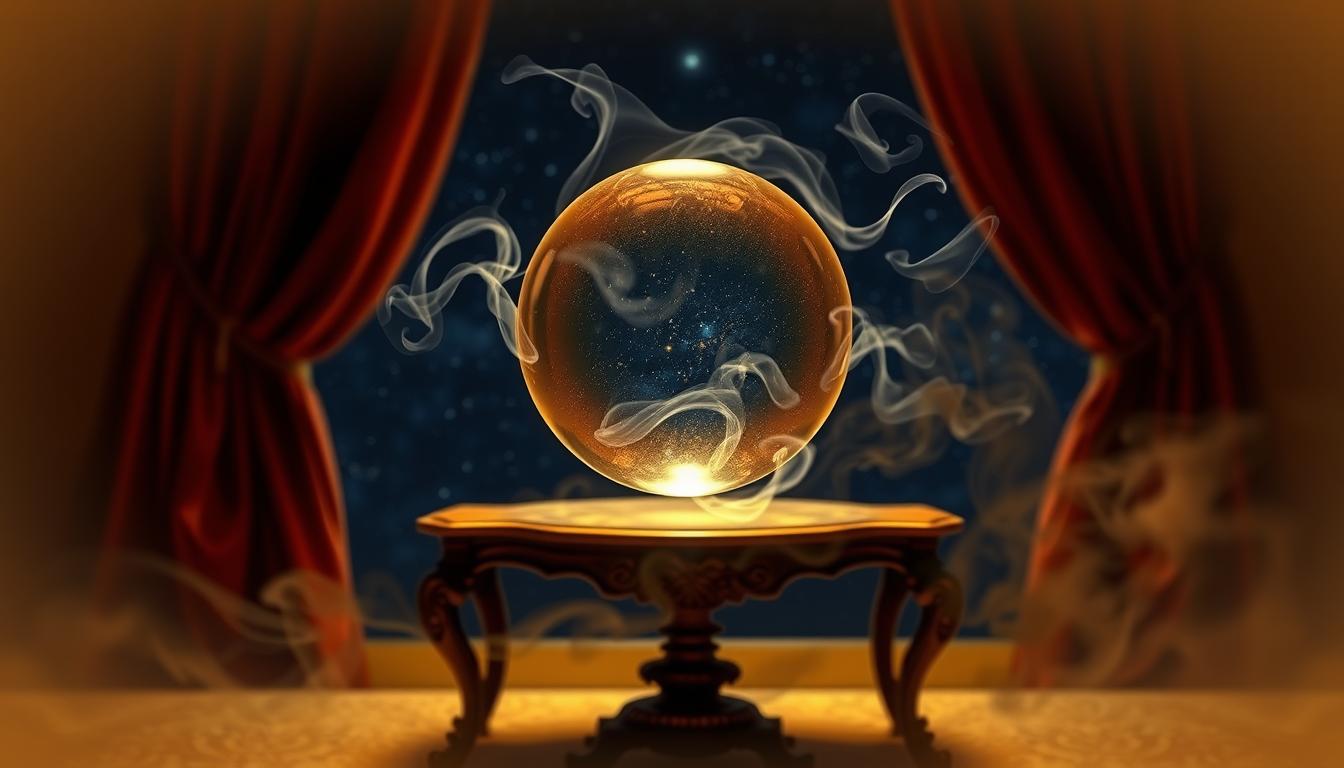The word “clairvoyant” comes from the French language, combining “clair” (clear) and “voyance” (vision). Its roots trace back to Latin, with “clarus” meaning clear and “vidēre” meaning to see. This term describes someone who claims to perceive information beyond normal senses.
Often linked to extrasensory perception (ESP), a clairvoyant is believed to have the ability to see or know things that others cannot. This concept has been part of both spiritual and scientific discussions for centuries.
Today, the word is commonly used to describe individuals with supposed supernatural abilities. Whether in literature, media, or everyday conversation, it carries a sense of mystery and intrigue. Let’s explore its meaning and usage in more detail.
Key Takeaways
- The term “clairvoyant” originates from French and Latin, meaning “clear-seeing.”
- It refers to the ability to perceive information beyond ordinary senses.
- Often associated with extrasensory perception (ESP).
- Used in both spiritual and scientific contexts.
- Commonly describes individuals with supposed supernatural abilities.
Understanding Clairvoyant: Definition and Meaning
From its origins in French and Latin, clairvoyance has evolved into a term with modern significance. The word combines “clair” (clear) and “voyance” (vision), reflecting its literal meaning of “clear-seeing.” Historically, it described perceptiveness, but over time, it became linked to extrasensory abilities.
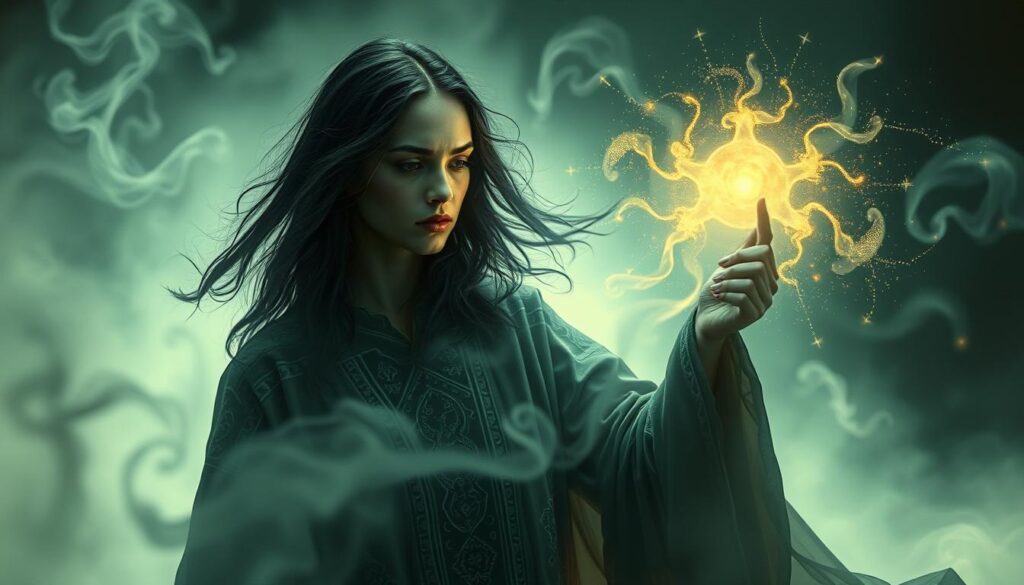
Etymology and Word Origins
The term traces back to Latin, with “clarus” meaning clear and “vidēre” meaning to see. In French, it gained prominence as a descriptor for individuals with heightened perception. Early uses in literature and spiritual contexts cemented its association with the unseen.
For example, figures like Nostradamus are often cited as examples of clairvoyant abilities. Their supposed foresight has made the term synonymous with predicting future events or perceiving hidden truths.
Modern Interpretations and Everyday Usage
Today, the word is commonly used to describe a person with psychic abilities. Modern interpretations focus on the idea of perceiving things beyond ordinary senses. This includes visions, dreams, or intuitive insights.
In everyday conversation, it’s often used interchangeably with psychic phenomena. People might refer to someone as clairvoyant if they seem to know things without explanation. This usage highlights the term’s relevance in understanding human experiences.
| Aspect | Historical Context | Modern Usage |
|---|---|---|
| Definition | Clear-seeing or perceptiveness | Extrasensory perception |
| Examples | Literary figures, spiritual leaders | Psychics, intuitive individuals |
| Cultural Impact | Linked to mysticism and prophecy | Associated with psychic readings and media |
Whether in history or modern times, the concept of clairvoyance continues to captivate. Its evolution from a literal term to a symbol of mystery reflects humanity’s fascination with the unknown.
Usage, Significance, and Synonyms of Clairvoyant
Understanding clairvoyance involves exploring its synonyms and broader implications. This term, rooted in the idea of “clear-seeing,” has evolved to describe a range of extrasensory abilities. By examining its related terms, we can better grasp its significance in both historical and modern contexts.
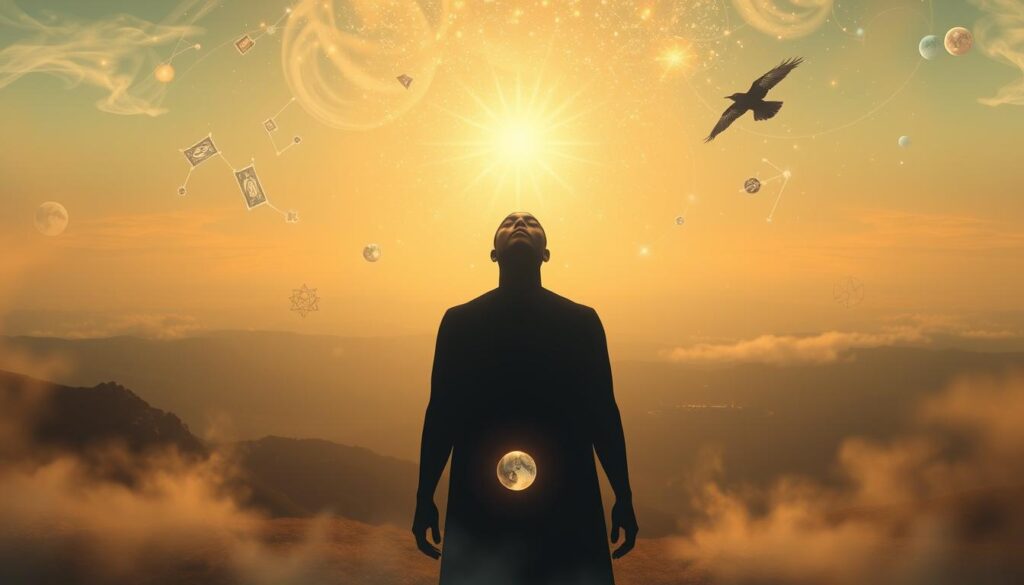
Common Synonyms and Related Terms
Clairvoyance is often associated with terms like psychic, intuitive, and visionary. These synonyms highlight different aspects of the concept. For instance, a psychic might focus on general extrasensory abilities, while a visionary emphasizes foresight or creative insight.
Other related terms include telepathy, precognition, and remote viewing. These words expand the scope of clairvoyance, linking it to broader paranormal phenomena. Together, they create a framework for understanding how perception extends beyond ordinary senses.
How the Word Enhances Perception and Vision
Clairvoyance and its synonyms help frame the idea of heightened perception. For example, someone described as intuitive might rely on gut feelings, while a clairvoyant claims to see events or objects beyond their physical reach. These terms collectively deepen our understanding of human capabilities.
In practical terms, clairvoyance has been used to describe real-life experiences. For instance, individuals have reported visions of future events or insights into hidden truths. These examples illustrate how the concept continues to captivate and inspire curiosity.
By exploring these related terms, readers can broaden their knowledge of psychic phenomena. Whether in literature, media, or personal anecdotes, clairvoyance remains a fascinating topic that invites further exploration.
Scientific Perspectives and Research on Extrasensory Perception
Scientific research on extrasensory perception has sparked both curiosity and skepticism over the years. From laboratory experiments to critical analysis, the study of these phenomena has been a subject of intense debate. Let’s explore the key findings and challenges in this field.
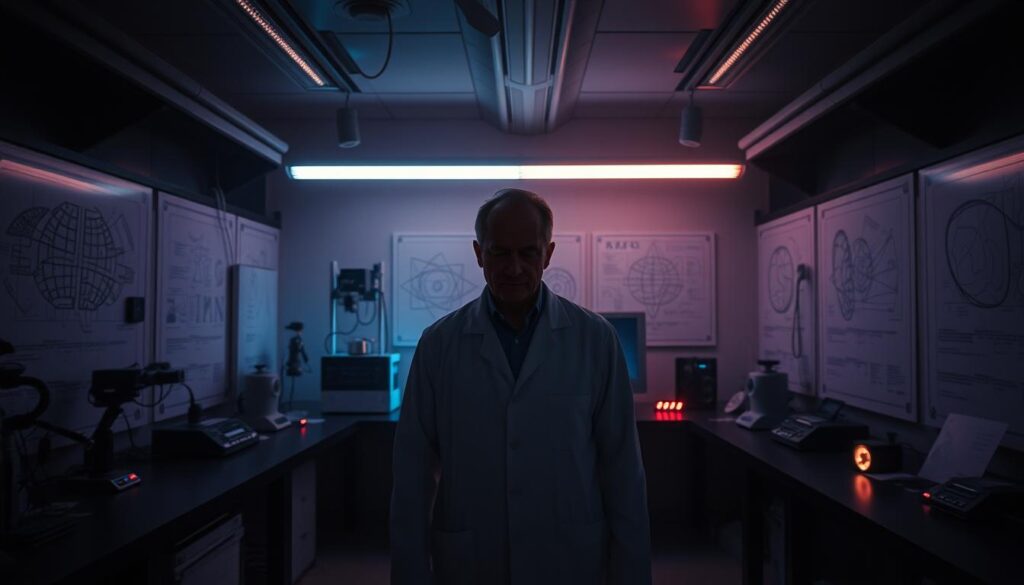
Laboratory Studies and Remote Viewing Experiments
One of the most notable areas of research involves remote viewing experiments. In the 1930s, J. B. Rhine and Louisa E. Rhine conducted studies at Duke University to test extrasensory perception (ESP). Their work included thousands of trials, but results were inconsistent.
Later, the Stanford Research Institute explored remote viewing, where participants attempted to describe distant locations. Some studies reported hit rates above chance, but critics argue these results were influenced by methodological flaws. For example, sensory leakage and poor randomization of targets were common issues.
Skeptical Analysis and Scientific Criticism
Despite some positive findings, the scientific community remains divided. Researchers like James Randi have highlighted the lack of reproducible evidence. A 1999 meta-analysis by Milton and Wiseman found no significant effects across 30 studies, reinforcing skepticism.
Factors such as confirmation bias and stacking effects have also been cited as challenges. These issues make it difficult to validate claims of extrasensory abilities. As a result, many scientists regard ESP as pseudoscience.
| Aspect | Findings | Challenges |
|---|---|---|
| Remote Viewing | Some studies reported above-chance results | Methodological flaws like sensory leakage |
| ESP Experiments | Early ganzfeld studies showed a 35% hit rate | Lack of replication in later studies |
| Scientific Consensus | No reliable evidence base | Criticism of theoretical framework |
In conclusion, while research on extrasensory perception continues, the lack of consistent evidence and methodological issues remain significant hurdles. The debate over its validity is likely to persist for years to come.
Clairvoyant in History, Spirituality, and Culture
Throughout history, the concept of clairvoyance has been deeply intertwined with spirituality and cultural beliefs. From ancient religious texts to modern spiritual practices, the idea of perceiving beyond ordinary senses has fascinated humanity. This section explores how clairvoyance has been interpreted across different cultures and traditions.
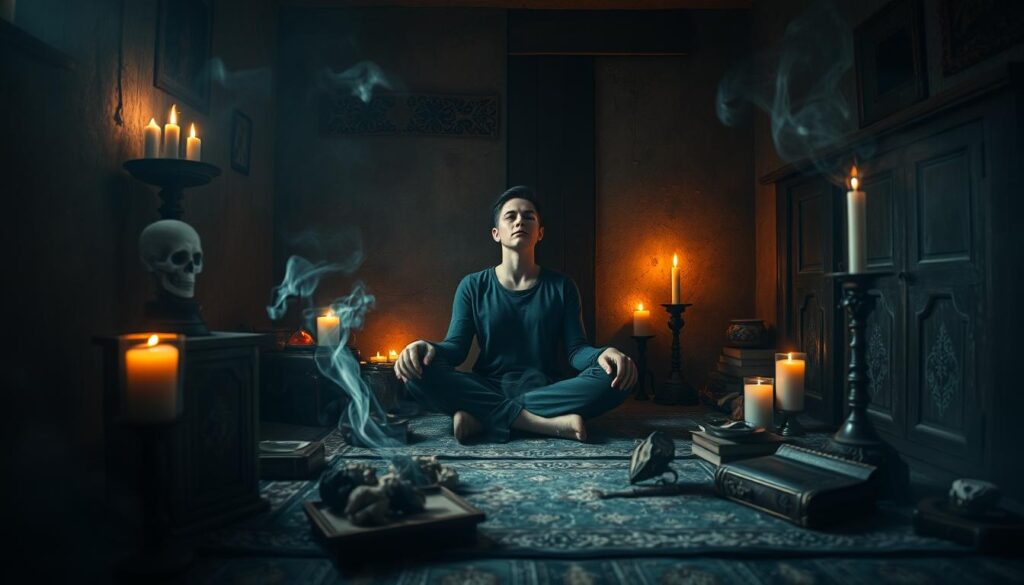
Historical Claims and Religious Beliefs
Many cultures have revered individuals believed to possess clairvoyant abilities. In Christianity, saints like Joan of Arc were said to have visions guiding their actions. Similarly, in Jainism, certain monks are believed to have divine insight, a synonym for clairvoyance, allowing them to perceive truths beyond the physical world.
Anthroposophy, founded by Rudolf Steiner, also emphasizes clairvoyance as a spiritual practice. Steiner described it as a way to access higher realms of consciousness. These examples highlight how clairvoyance has been viewed as a divine gift or spiritual insight across various traditions.
In other cultures, clairvoyance has been both respected and critiqued. For instance, in ancient Greece, oracles like the Pythia were consulted for their prophetic visions. However, skeptics often questioned the authenticity of these claims. This duality of reverence and skepticism continues to shape modern interpretations of clairvoyance.
Notable Figures and Cultural Narratives
Historical figures like Nostradamus and Edgar Cayce are often cited as examples of clairvoyant abilities. Their predictions and insights have left a lasting impact on cultural narratives. These individuals are frequently compared to modern psychics, showcasing the evolution of the term over time.
In the 19th century, the Spiritualist movement brought clairvoyance into the mainstream. Figures like the Fox sisters claimed to communicate with spirits, sparking widespread interest. This movement also faced criticism, with many accusing practitioners of fraud. Despite this, it remains a significant chapter in the history of clairvoyance.
| Aspect | Historical Context | Modern Interpretation |
|---|---|---|
| Religious Beliefs | Viewed as divine insight | Associated with spiritual practices |
| Cultural Impact | Oracles and prophets revered | Psychics and mediums popularized |
| Public Perception | Mixed reverence and skepticism | Continued debate and fascination |
From ancient oracles to modern mediums, clairvoyance has evolved while retaining its mystique. Whether seen as a divine gift or a psychological phenomenon, it continues to captivate people worldwide. For more insights into spiritual practices, visit our sample page.
Real-Life Experiences and Examples of Clairvoyance
Many people have shared fascinating stories about their encounters with psychic abilities. These real-life experiences often highlight how such insights can influence daily decisions and personal growth. From predicting life-changing events to offering emotional clarity, these accounts provide a glimpse into the mysterious world of psychic perception.
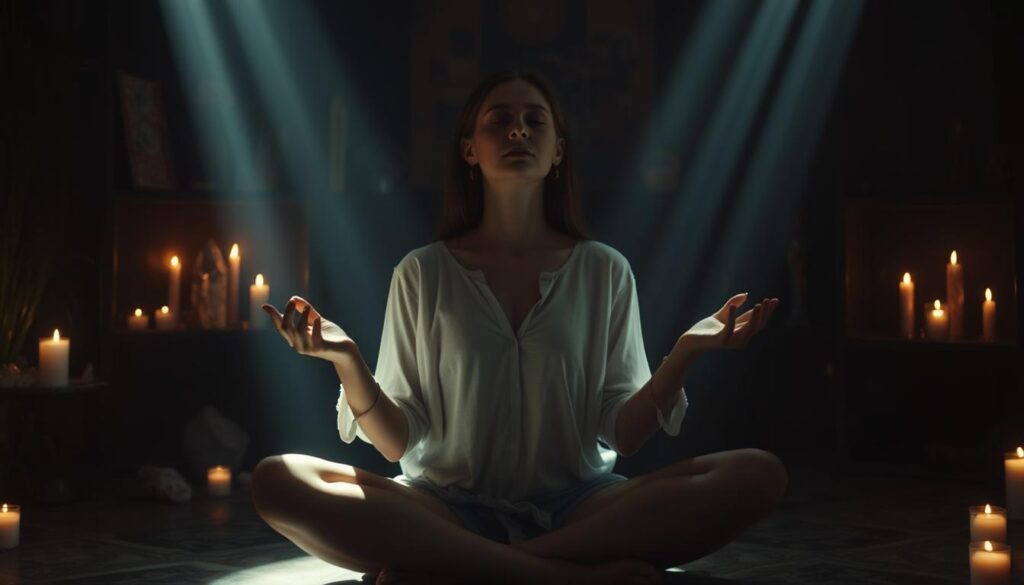
Personal Testimonials and Daily Effects
One woman shared how a psychic predicted she would meet her life partner and have twins within three years. To her amazement, this prediction came true. Such stories are not uncommon, as many individuals report life-altering experiences after consulting psychics.
Another account involves a psychic who accurately described a person’s emotional state and relationship struggles. This insight led to personal revelations and a renewed focus on self-care. These examples show how psychic readings can offer clarity and direction in everyday life.
Developing the Ability Over Time
For those interested in exploring their own psychic potential, practice is key. Start by paying attention to your intuition and keeping a journal of any unusual experiences. Over time, you may notice patterns or heightened awareness.
Meditation and mindfulness exercises can also help sharpen your mind and enhance your perception. Many practitioners emphasize the importance of patience and consistency in developing these abilities. As you grow more attuned, you may find your skills deepening naturally.
Whether through personal testimonials or practical advice, the world of psychic phenomena continues to captivate and inspire. By exploring these experiences, you may uncover new ways to connect with your inner self and the world around you.
Conclusion
Exploring the concept of clairvoyance reveals its deep roots and modern relevance. From its origins in French and Latin to its role in spiritual and scientific discussions, the term encapsulates the idea of perceiving beyond ordinary senses. Its effect on culture and personal beliefs continues to captivate, blending mystery with everyday language.
Scientific research remains divided, with studies often facing skepticism. Yet, the ongoing search for understanding keeps the topic alive. Cultural narratives and personal accounts further highlight its significance, offering diverse perspectives on this intriguing phenomenon.
Whether viewed as a spiritual gift or a psychological trait, clairvoyance invites curiosity and reflection. As you consider the insights shared here, feel free to explore further and form your own conclusions. The journey to understanding such phenomena is as fascinating as the abilities themselves.

